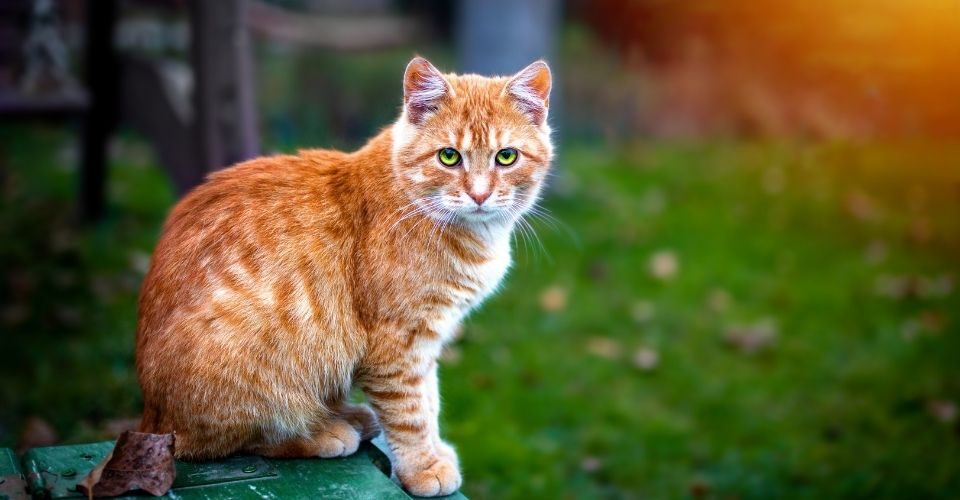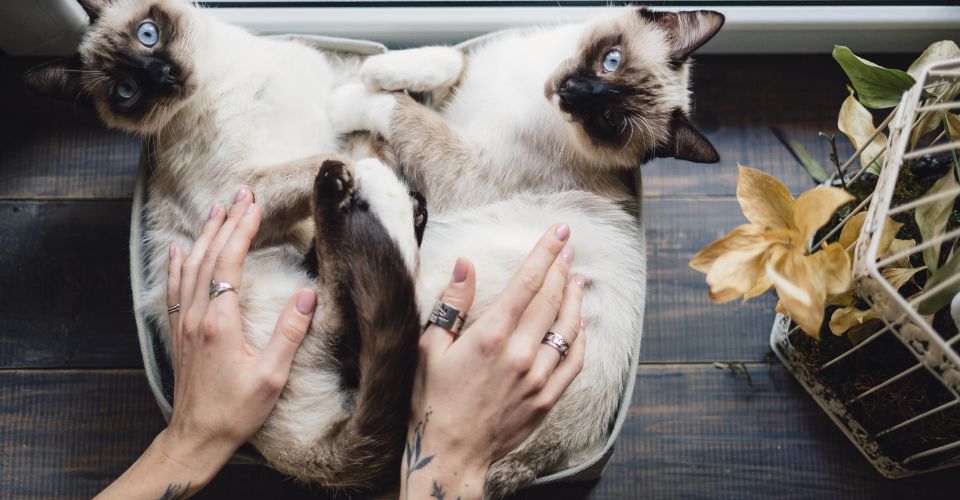Tabby cats have been around for centuries. They are easily distinguished due to their unique coat patterns and the signature ‘M’ carved on their forehead. Due to such noteworthy looks, a few questions might often pop up in your mind: How tabby cats got the M? Is it science or a result of some supernatural phenomenon?
Well, we will try to answer your queries here in this blog. Let us delve into it.
How Tabby Cats Got the M?
Both science and theories have jumped in to explain the mystery behind the M marking on tabbies’ foreheads. Let us see what each has to say.
Science Behind Tabby’s “M”
As popular as our tabby cats are (think of famous orange tabby cats, Milo and Garfield), scientists know very little about their unique appearance. They have only recently revealed the reason behind tabby stripes: a specific set of genes set the tabby pattern on felines. These particular genes are also responsible for giving striped patterns to tigers and leopards. Hence, the answer to the question of how tabby cats got the M on their forehead lies in the genes too.
According to a study, these genes responsible for imparting the tabby patterns in cat breeds with stripes are “activated in an embryo’s skin cells before that cat’s fur develops.” These tabby stripes can be seen in the early skin cells under the microscope.
Ancient Myths and Theories Surrounding Tabby’s “M”
Three legends are famous for M markings on all types of tabby cats. Let us briefly discuss each of them.
Mark of the Moon
The first legend comes from ancient Egypt, where cats were called Mau, most probably because of the sound they make: meow. However, the word ‘Mau’ also meant light or to see. It is, hence, said that cats were called so because their eyes were very bright at night – akin to the shine of the moon. Tabbies are the descendants of these Egyptian Maus, and the M marking on cats originated there, which they carry till today.
Did You Know?
Cats have a special material in their eyes, known as tapetum lucidum, which acts as a mirror and reflects the light passing through their retinas. This not only makes their eyes glow in the dark but also brightens their view at night. This also plays a role in enabling cats to see in dark—dim light.
Mary’s Mark
When baby Jesus Christ was born, he was lying down on a stack of hay-filled in a container. Nevertheless, this arrangement failed to provide enough comfort to the baby, and he started to shiver soon and consequently began to cry. Virgin Mary, the mother, showed up and took baby Jesus into her warm blanket, but the covering too was not warm enough to comfort the newborn.
As nothing could calm the baby, Mary then requested all the animals around her to come close so that warmth could be provided by the heat of their bodies. A tabby cat, who had been watching the whole case for some time, eventually came close and began kissing the forehead of the infant in an attempt to calm him up. It worked! Jesus was then pacified, and he had a peaceful sleep afterward.
As a reward and thank you gesture, Mary then stroked the head of the kitty with affection. It is said that this stroking left Mary’s initial on tabbies’ head forever.
Muezza the Cat and Prophet Muhammad
The third tale comes from Islam. It is said that Prophet Muhammad owned a tabby cat named Muezza. One day, a snake slithered into Prophet Muhammad’s robe laying on the floor. As soon as Muezza saw the snake, she immediately jumped and killed the venomous being so that the latter might not bite the Prophet when he wears the robe, unaware of the snake’s presence in it.
The Prophet was watching the incident, and he felt grateful for this brave act of his loyal and lovely kitty. So, he then stroked her head in affection.
Hence, afterward, the letter ‘M’ was placed on the tabbies’ heads forever—symbolizing Prophet Muhammad’s love for them.
However, this tale is not authenticated by a number of Muslim scholars, and some even say that Prophet Muhammad never kept a pet despite his tremendous affection for cats.
What Does Tabby Cat History Have to Say?
While history does not tell how tabbies got their unique patterns, it does have its versions of how tabbies go their name. Let’s expand on that a little.
Tabbies had their name as their appearance pattern was compared to a cloth or a type of silk taffeta that used to be a specialty of Al-Attabiya district in Baghdad, present-day Iraq. Hence, this silky and beautiful fabric was named after its place of origin.
During the 14th century, the French word for it was ‘atabis,’ which later evolved into ‘tabby’ in English during the 17th century.
Research has shown that tabby cats appeared during the Middle Ages. Nevertheless, they did not become so common until the advent of the 18th century.
What Else Have Tabby Cats Got?
Having unveiled the enigma of M on tabbies, let’s uncover their distinct physical as well as mental traits.
Tabby Cat Appearance
In addition to the M marking on their forehead, the appearance of tabby cats is distinct because of stripes, dots, and round patterns all over the body.
Did You Know?
Tabby is not a breed but a name of felines having distinctive patterns over their body.
There are four tabby patterns based on different patterns having specific genetic explanations.
Classic Tabby Cat
They have thick patterns of round lines along with a particular mark on the sides of the body that resembles a bull’s-eye. They also have a butterfly-type pattern on their shoulder. This pattern is also known as blotched or marble.
Ticked (Agouti) Tabby Cat
These felines have either few or no stripes at all. In fact, they appear to be salt-and-pepper and sand-like. Moreover, they have a considerable amount of tabby markings on their face. Ticked tabby cats come in a variety of colors.
Mackerel Tabby Cat
They have dark stripes running perpendicular to their spine. Furthermore, they have somewhat similar lines on their legs while their tail has rings on them. This is the most common pattern in tabbies.
Did You Know?
Mackerel Tabby Cats take their name from Mackerel Fish, an aquatic creature having a similar pattern.
Spotted Tabby Cat
They have spotted appearance due to broken stripes on them due to the presence of a modifier gene. A number of breeds exhibit spotted tabby cat appearance.
Tabbitude
Though tabby is not a breed, these cats are somewhat special when it comes to their personality and temperament.
All tabbies are friendly kitties, and there is no aggression in them at all; however, the orange tabby cats are known to be the most affectionate and sociable of all.
Tabby cats are considered to be very lively and outgoing. Likewise, they love to play around and explore their surroundings. They are also considered to be very sharp-minded. Nevertheless, the most prominent trait which has made them especially popular among children is their cuddly attitude. Living with a tabby cat, you may often wake up to your cat lying on top of you or snuggling in bed with you.
Final Verdict: How Tabby Cats Got the M?
Science, as well as different theories, have tried to solve this conundrum. While the former gives a more logical analysis, the latter provides an exciting set of tales. Though whichever explanation you believe in, or whatever the tabby history may be, one thing is for sure: tabby cats are extremely lovely and amazing—both in terms of appearance and personality.
So the next time you wonder about this marking, consider ‘M’ to be the initial of ‘Marvelous.’





